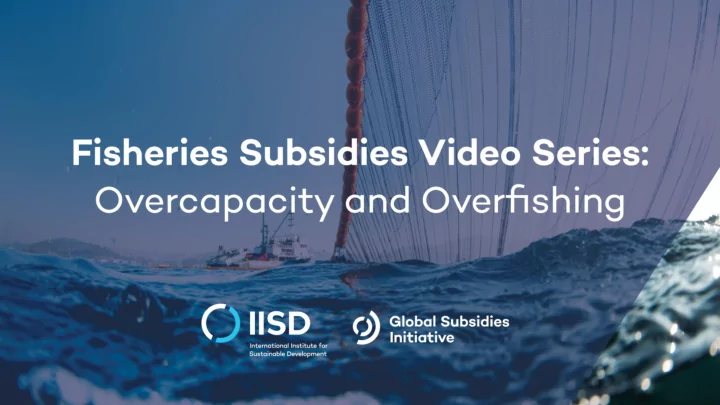

Key Decisions – Overcapacity and overfishing Key decision 1: Which prohibition or qualitative restrictions should apply to fisheries subsidies? • Options : Prohibition of subsidies that contribute to overcapacity and overfishing What subsidies are Under what circumstances? prohibited? • • All subsidies When provided to large-scale industrial fishing • • Subsidies for When the rate of fishing or the capacity of the operational and capital fleet is beyond sustainable levels (unless effective costs management in place) • Except when fisheries management is in place • Prohibition for subsidies to fishing in areas beyond national jurisdiction o Only subsidies “contingent or tied to” fishing in ABNJ or “for” fishing in ABNJ; or more broadly any subsidy “to” vessels or operators fishing in ABNJ. o Geographical limits (high seas, RFMO/A, EEZ of third countries) • Prohibition of subsidies to re-flagged vessels
Key Decisions – Overcapacity and overfishing Key decision 2: Should the agreement include quantitative as well as qualitative restrictions on subsidies? If so, how should these be designed? • Options : Tiers of Members by level of capture, with different rules for each tier: - Tier 1: Negotiated individual caps and reduction commitments (default cap in specific cases) - Tier 2: Default cap or negotiated cap. No reduction commitment. - Tier 3: No cap or reduction commitment. • Caps according to % of (a) the total level of subsidization, or (b) level of capture, or (c) global average x number of fisherman; negotiated reductions. • Caps (and resulting reductions) according to % of value of marine capture, across four tiers of Members. • Caps (and resulting reductions) according to a common formula, with higher reduction percentages for higher portions of a total subsidy amount.
Key Decisions – Overcapacity and overfishing Key decision 3: Should the discipline contain a “Green Box” of allowable subsidies? If so, what should its contours be? • Options : Should it exempt subsidies from qualitative or quantitative rules, or both? • Should it be conditional or restricted in some way? • Which elements should it cover? - Fisheries management, R&D - Reduction of fishing capacity - Subsidies to small-scale fishing - Health and safety - Others?
Key Decisions – Overcapacity and overfishing Key decision 4: What special and differential treatment would be appropriate and effective? • Options : Longer timeframes for implementation of rules • Technical assistance and capacity building • Exceptions for subsidies to fishing in geographic areas (territorial sea, EEZ) • Exceptions for subsidies to small-scale fishing • Differentiated commitments based on development status • Objective criteria and thresholds to deal with differentiation
Recommend
More recommend